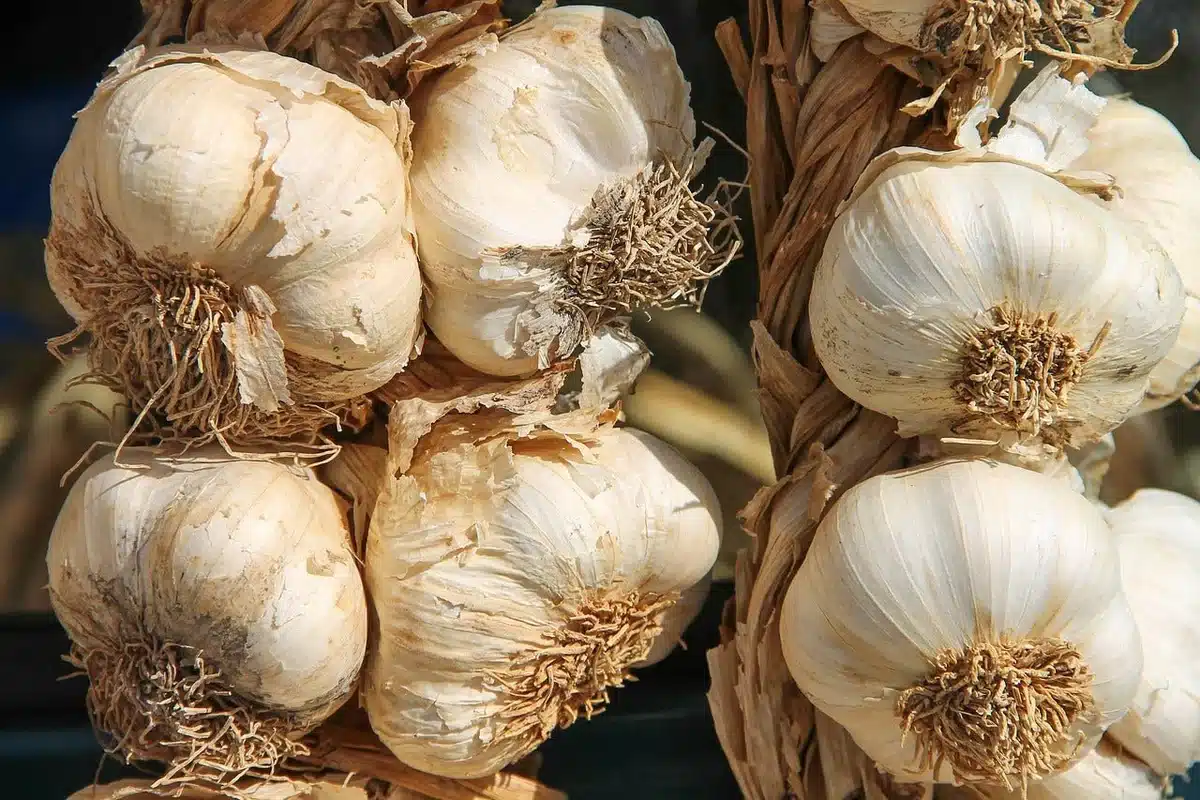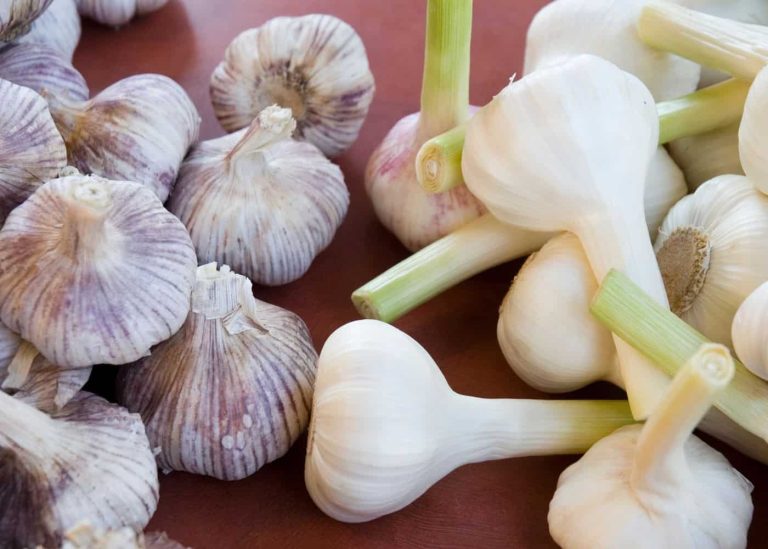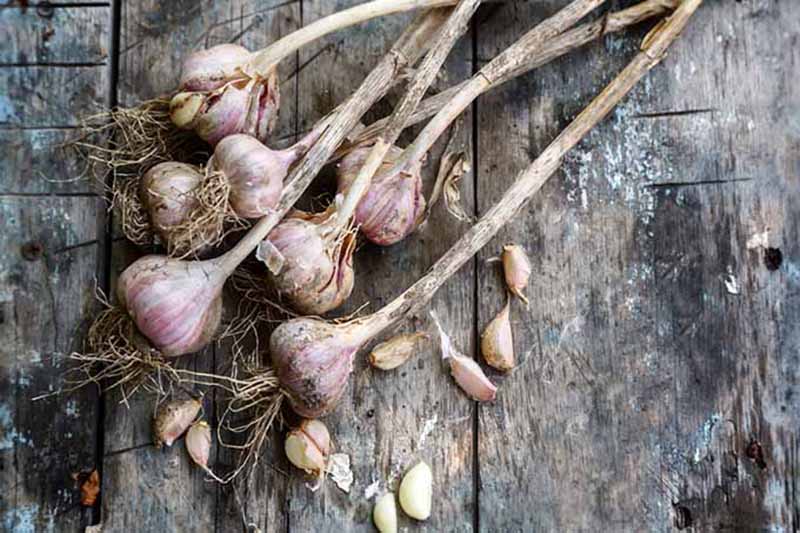Have you ever thought about the different kinds of garlic you can find in a store? Garlic is more than just a common kitchen ingredient; it’s loved worldwide for its strong taste and many health benefits.
In this guide, we’ll look at the different types of garlic you can buy, give tips on how to grow them and point out what makes each one special. From the less intense to the very strong, garlic varieties add flavor to dishes from many different foods.
Softneck Garlic: The Pantry Staple

Softneck garlic is available in most stores due to its long shelf life and ease of cultivation. Varieties like ‘Silverskin’ and ‘Artichoke’ boast a mild flavor, making them perfect for everyday cooking. They are preferred for those who enjoy making braids or need garlic that stores well over longer periods.
Cultivating Softneck Garlic
To grow softneck garlic, plant the cloves in fertile, well-draining soil during autumn. They require minimal care and thrive in a sunny location with regular watering to keep the soil moist but not soggy. Softneck garlic is an excellent starting point for those new to gardening, as it is quite forgiving and adaptable.
Special Traits of Softneck Garlic
Softneck varieties are known for their soft, flexible stems, which allow them to be braided for storage. This garlic type generally produces more cloves per bulb, making it a bountiful harvest for the space it occupies. It’s less likely to bolt, meaning it doesn’t produce a flower stalk, allowing the plant to focus energy on the bulb.
Hardneck Garlic: The Chef’s Choice
Hardneck garlic is renowned for its bold flavors and easy-to-peel cloves. Varieties like ‘Rocambole’ and ‘Porcelain’ are favorites in gourmet kitchens for their distinctive taste profiles that stand out in any dish. They also produce scapes, which are delightful in their own right.
Growing Hardneck Garlic
For optimal growth, plant hard-neck garlic in areas with cold winters. Space the cloves generously to allow for adequate air circulation and root spread. Mulching around the plants will help insulate them against the cold and retain moisture during dry spells.
Organic hardneck garlic bulbs for planting varieties, such as ‘Music’ and ‘German Red,’ are sought after for their superior flavor and organic growth methods. These varieties are particularly adept at thriving in organic settings where no chemicals are used, enhancing their taste and health benefits.
Unique Features of Organic Hardneck Garlic
These garlic types are known for their larger cloves and more robust flavor profile, which is ideal for those who cherish a strong garlic punch in their dishes. The organic cultivation process ensures a purer product and contributes to sustainable farming practices.
Fermented Honey Garlic: Wisdom of the Ancients
Honey garlic contains only two ingredients: raw organic honey and freshly peeled certified organic garlic. When these two ingredients are combined, fermentation begins. It takes about 3 to 4 weeks for the fermentation to complete. The connotation is fully fermented when the air bubbles cease to be seen in its container.
It is particularly sought after by culinary enthusiasts and chefs who appreciate its ability to enhance dishes without overwhelming them with too strong a flavor. This mixture is treasured for its taste and health benefits, including its significantly higher antioxidant properties when combined.
How To Use Honey Garlic?
Its versatility in cooking ranges from raw applications in salads to becoming the last ingredient in sauces. Heating honey garlic over 120 degrees voids all its antioxidant benefits. People have been using honey garlic since time began to cure an endless list of ailments, from the common cold to heart health.
Advantages Of Honey Garlic
Many people swear that a teaspoon of honey garlic shortens the common cold to one or two days, especially in children over age two. Much research has been conducted on both honey and garlic for their antioxidant properties. When fermented, you intake the best of both ingredients, creating a supercharged boost to your immune system.
Garlic Scapes: An Unexpected Delight
Garlic scapes are the flower stems that hardneck garlic varieties produce. They are considered a delicacy and are harvested in late spring. They offer a crisp, mild flavor that adds a new dimension to dishes. Garlic scapes will curl three times with a flower head at the tip.
Best picked just before the second curl begins and are most tender. When fully uncurled and the scape points to the sun straight as an arrow it’s a sign that the garlic is ready to harvest at peak flavor in 10 days, Scapes are seasonal lasting just two or three weeks a year.
You may see them for sale at some online certified organic garlic seed companies and Farmers Markets in the months of May and June in the Northern Hemisphere.
Harvesting and Using Garlic Scapes
Snip the scapes early in their growth to encourage the bulbs to thicken. Use them fresh in salads, or cook them as you would asparagus. Their unique shape and flavor make them excellent for adding visual appeal and a gentle garlic flavor to dishes.
Discovering Garlic’s Versatility
Exploring the different types of garlic can expand your culinary horizons and gardening skills. Each variety brings its features and flavors, making garlic an indispensable component in the kitchen and garden. Whether you’re a seasoned chef or a gardening enthusiast, garlic provides ample opportunities for experimentation and enjoyment.











